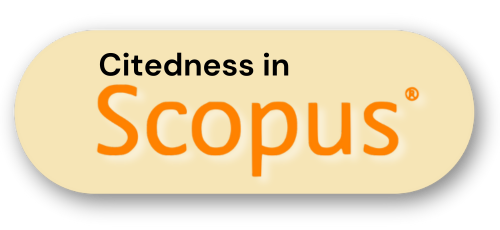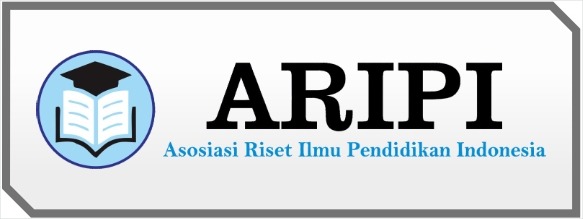Tracing The Shifting Goals and Curriculum Trends in English Language Teaching (2015-2025): A Systematic Literature Review and Bibliometric Analysis
DOI:
https://doi.org/10.61194/education.v3i3.821Keywords:
Bibliometric analysis, Curriculum trends, English language teaching (ELT), Systematic review, Sustainability educationAbstract
This study conducts a systematic literature review and bibliometric analysis to investigate the shifting goals and curriculum trends in English Language Teaching (ELT) from 2015 to 2025. Drawing upon a dataset of 92 articles retrieved from the Scopus database, the study identifies influential themes, key authors, dominant approaches, and emerging conceptual developments in the field. The findings reveal a major shift from traditional grammar-based instruction to communicative, reflective, and context-responsive teaching methodologies. Five primary thematic clusters are identified: instructional innovation, intercultural communication, sustainable integration, affective and psychological dimensions, and institutional reform. Furthermore, the study underscores the increasing significance of teacher professionalism, learner autonomy, and interdisciplinary approaches in shaping modern ELT curricula. Data visualization was carried out using VOSviewer, and the review process adhered to PRISMA standards to ensure methodological transparency and rigor. This comprehensive analysis offers valuable insights into how ELT has evolved in response to global educational demands and 21st-century challenges. It provides a strategic foundation for future research, curriculum development, and pedagogical innovation within the dynamic landscape of language education.
References
Andika, J. D., & Yulia, Y. (2025). Tantangan dan strategi pembelajaran bahasa inggris dalam implementasi kurikulum merdeka di sekolah menengah indonesia. Jurnal Pendidikan Dan Teknologi Indonesia (JPTI), 5(5), 1417–1433. https://doi.org/https://doi.org/10.52436/1.jpti.803 DOI: https://doi.org/10.52436/1.jpti.803
Aria, M., & Cuccurullo, C. (2017). bibliometrix: An R-tool for comprehensive science mapping analysis. Journal of Informetrics, 11(4), 959–975. https://doi.org/10.1016/j.joi.2017.08.007 DOI: https://doi.org/10.1016/j.joi.2017.08.007
Baas, J., Schotten, M., Plume, A., Côté, G., & Karimi, R. (2020). Scopus as a curated, high-quality bibliometric data source for academic research in quantitative science studies. Quantitative Science Studies, 1(1), 377–386. https://doi.org/10.1162/qss_a_00019 DOI: https://doi.org/10.1162/qss_a_00019
Balla, A. A. S. (2017). Foreign language anxiety in Saudi classroom: A case study of Saudi tertiary female students in Prince Sattam University. English Language Teaching, 10(5), 28. https://doi.org/10.5539/elt.v10n5p28 DOI: https://doi.org/10.5539/elt.v10n5p28
Bildik, C., & Altun, S. (2022). A curricular perspective on the implementation gap : Analysis of the 2018 ELT curriculum for primary and secondary schools. Western Anatolia Journal of Educational Sciences, 13(2), 1196–1209. https://doi.org/https://doi.org/10.51460/baebd.1196707 DOI: https://doi.org/10.51460/baebd.1196707
Cakıcı, D. (2016). The correlation among EFL learners’ test anxiety , foreign language anxiety and language achievement. English Language Teaching, 9(8), 190–203. https://doi.org/10.5539/elt.v9n8p190 DOI: https://doi.org/10.5539/elt.v9n8p190
Can, D. T. (2018). Foreign language teaching anxiety among pre-service teachers during teaching practicum. International Online Journal of Education and Teaching (IOJET), 5(3), 579–595.
Cenoz, J., & Gorter, D. (2023). Pedagogical translanguaging. TESOL in Context, 32(1), 165–168. https://doi.org/https://doi.org/10.1017/9781009029384 DOI: https://doi.org/10.21153/tesol2023vol31no2art1799
Chan, J. Y. H. (2020). Towards english as an international language: The evolving ELT curricula and textbooks in Hong Kong. International Journal of Applied Linguistics (United Kingdom), 30(2), 244–263. https://doi.org/10.1111/ijal.12277 DOI: https://doi.org/10.1111/ijal.12277
Dong, J., & Lu, X. (2020). Promoting discipline-specific genre competence with corpus-based genre analysis activities. English for Specific Purposes, 58, 138–154. https://doi.org/10.1016/j.esp.2020.01.005 DOI: https://doi.org/10.1016/j.esp.2020.01.005
Donthu, N., Kumar, S., Mukherjee, D., Pandey, N., & Lim, W. M. (2021). How to conduct a bibliometric analysis: An overview and guidelines. Journal of Business Research, 133(May), 285–296. https://doi.org/10.1016/j.jbusres.2021.04.070 DOI: https://doi.org/10.1016/j.jbusres.2021.04.070
Erarslan, A. (2018). Strengths and weaknesses of primary school english language teaching programs in Turkey: Issues regarding program components. Eurasian Journal of Applied Linguistics (EJAL), 4(2), 325–347. https://doi.org/10.32601/ejal.464194 DOI: https://doi.org/10.32601/ejal.464194
Galloway, N., & Rees, N. (2020). The ‘internationalisation’ , or ‘Englishisation’, of higher education in East Asia. Higher Education, 80(3), 395–414. https://doi.org/https://doi.org/10.1007/s10734-019-00486-1 DOI: https://doi.org/10.1007/s10734-019-00486-1
Godwin-jones, R. (2021). Evolving technologies for language learning. Language Learning & Technology, 25(3), 6–26. DOI: https://doi.org/10.1017/S1366728921000547
Gunantar, D. A. (2016). The impact of english as an international language on english language teaching in Indonesia. LANGUAGE CIRCLE: Journal of Language and Literature, 1(2), 141–151. https://doi.org/https://doi.org/10.15294/LC.V10I2.5621
Hallinger, P. (2023). Bibliometric review methodology and state of the science review of research on problem-based learning, 2017-2022. Interdisciplinary Journal of Problem-Based Learning, 17(2 Special issue), 2017–2022. https://doi.org/10.14434/ijpbl.v17i2.35761 DOI: https://doi.org/10.14434/ijpbl.v17i2.35761
Herman, Purba, R., Thao, N. Van, & Purba, A. (2020). Using genre-based approach to overcome students’ difficulties in writing. 7(4), 464–470. https://doi.org/10.20448/journal.509.2020.74.464.470 DOI: https://doi.org/10.20448/journal.509.2020.74.464.470
Hisatomi, A., Koba, H., Mizuno, K., & Ono, S. (2021). ELTHON: An escher-like tile design method using hierarchical optimization. Applied Soft Computing, 112. https://doi.org/10.1016/j.asoc.2021.107771 DOI: https://doi.org/10.1016/j.asoc.2021.107771
Jon, R. B., Embong, R., Purnama, B., & Wadi, A. S. (2021). The challenges if english language teaching in Indonesia. IJEAL (International Journal of English and Applied Linguistics), 1(3), 158–168. https://doi.org/http://dx.doi.org/10.47709/ijeal.v1i3.1157 DOI: https://doi.org/10.47709/ijeal.v1i3.1157
Kadirhanogullari, M. K., & Kose, E. O. (2024). A bibliometric analysis of articles on bibliometric studies in science education. International Journal of Research in Education and Science, 10(2), 315–339. https://doi.org/10.46328/ijres.3370 DOI: https://doi.org/10.46328/ijres.3370
Kazemi, A., Bagheri, M. S., & Rassaei, E. (2020). Dynamic assessment in English classrooms : Fostering learners’ reading comprehension and motivation. Cogent Psychology, 7(1). https://doi.org/10.1080/23311908.2020.1788912 DOI: https://doi.org/10.1080/23311908.2020.1788912
Khasanah, N., Faridi, A., & Wahyuni, S. (2023). The implementation of genre-based approach through project-based learning in teaching writing. English Education Journal, 13(3), 465–475. https://doi.org/https://doi.org/10.22202/tus.2022.v8i2.5843 DOI: https://doi.org/10.15294/eej.v13i3.77331
Landis, J. R., & Koch, G. G. (1977). An application of hierarchical among agreement of majority in the assessment statistics multiple observers. Biometrics, 33(2), 363–374. https://doi.org/https://doi.org/10.2307/2529786 DOI: https://doi.org/10.2307/2529786
Martínez-López, F. J., Merigó, J. M., Valenzuela-Fernández, L., & Nicolás, C. (2018). Fifty years of the European journal of marketing: A bibliometric analysis. European Journal of Marketing, 52(1–2), 439–468. https://doi.org/10.1108/EJM-11-2017-0853 DOI: https://doi.org/10.1108/EJM-11-2017-0853
Martirossian, A., & Hartoonian, A. (2015). Lowering foreign language anxiety through self-regulated learning strategy use. English Language Teaching. DOI: https://doi.org/10.5539/elt.v8n12p209
Mohammadpur, B., & Ghafournia, N. (2015). An elaboration on the effect of reading anxiety on reading achievement. English Language Teaching, 8(7), 206–215. https://doi.org/10.5539/elt.v8n7p206 DOI: https://doi.org/10.5539/elt.v8n7p206
Ningsih, N. N., & Sartika, L. (2023). Karakteristik kurikulum merdeka belajar. TARBIYAH: Jurnal Ilmu Pendidikan Dan Pengajaran, 2(2), 204–210. https://doi.org/https://doi.org/10.1342/tarbiyah.v2i2.111
Novita, P. (2019). What happened to initial teacher education in Indonesia? A review of the literature. European Journal of Social Science Education and Research, 6(3). https://doi.org/10.26417/ejser.v6i3.p88-103 DOI: https://doi.org/10.26417/ejser.v6i3.p88-103
Nugroho, T., & Narawaty, D. (2022). Kurikulum 2013, kurikulum darurat (2020-2021), dan kurikulum prototipe atau kurikulum merdeka (2022) mata pelajaran bahasa inggris: Suatu kajian bandingan. SINASTRA, 1, 373–382. https://doi.org/https://doi.org/10.30998/sinastra.v1i0.6099
Rose, H., & Galloway, N. (2019). Global englishes for language teaching. Cambridge: Cambridge University Press., January. https://doi.org/10.1017/9781316678343 DOI: https://doi.org/10.1017/9781316678343
Sadiq, J. M. (2017). Anxiety in english language learning: A case study of english language learners in Saudi Arabia. English Language Teaching, 10(7), 2017. DOI: https://doi.org/10.5539/elt.v10n7p1
Sengupta, L. N. (1992). Bibliometrics, informatics, scientometrics and librametrics: An overview. 42(2), 75–98. https://doi.org/https://doi.org/10.1515/libr.1992.42.2.75 DOI: https://doi.org/10.1515/libr.1992.42.2.75
Sharma, P., Singh, R., Tamang, M., Singh, A. K., & Singh, A. K. (2021). Journal of teaching in travel &tourism: A bibliometric analysis. Journal of Teaching in Travel and Tourism, 21(2), 155–176. https://doi.org/10.1080/15313220.2020.1845283 DOI: https://doi.org/10.1080/15313220.2020.1845283
Some, K. (2025). CLT-based curricula and pedagogical recommendations in EFL contexts: A textual analysis of the 10th-grade English curriculum in Burkina Faso. The Journal of Education Insights, April. https://doi.org/10.37155/2972-4856-jei0301-2 DOI: https://doi.org/10.37155/2972-4856-jei0301-2
Song, K. H., Child, G., & Lee, J. (2024). Equity and excellence in English language education in the USA : A literature review from the 1960s to 2020s. Culture, Education and Future, 2(1), 9–31. https://doi.org/10.70116/2980274115 DOI: https://doi.org/10.70116/2980274115
Wette, R. (2011). Product – process distinctions in E LT curriculum theory and practice. ELT Journal, 65(2), 136–144. https://doi.org/10.1093/elt/ccq022 DOI: https://doi.org/10.1093/elt/ccq022
Xi, J., & Lantolf, J. P. (2020). Scaffolding and the zone of proximal development: A problematic relationship. Journal for the Theory of Social Behaviour, 51(1), 1–24. https://doi.org/10.1111/jtsb.12260 DOI: https://doi.org/10.1111/jtsb.12260
Xie, X. S., & Fang, F. (2025). Enhancing global englishes in secondary education : Addressing student needs through teacher education and curriculum innovation. RELC Journal, 0(0), 1–17. https://doi.org/10.1177/00336882251332310 DOI: https://doi.org/10.1177/00336882251332310
Yan, Y., & Chen, H. (2021). Developments and emerging trends of blended learning a document co-citation analysis (2003–2020). International Journal of Emerging Technologies in Learning, 16(24), 149–164. https://doi.org/10.3991/ijet.v16i24.25971 DOI: https://doi.org/10.3991/ijet.v16i24.25971
Zein, S., Sukyadi, D., Hamied, F. A., & Lengkanawati, N. S. (2020). English language education in Indonesia : A review of research (2011-2019). Language Teaching, 1–33. https://doi.org/10.1017/S0261444820000208 DOI: https://doi.org/10.1017/S0261444820000208






